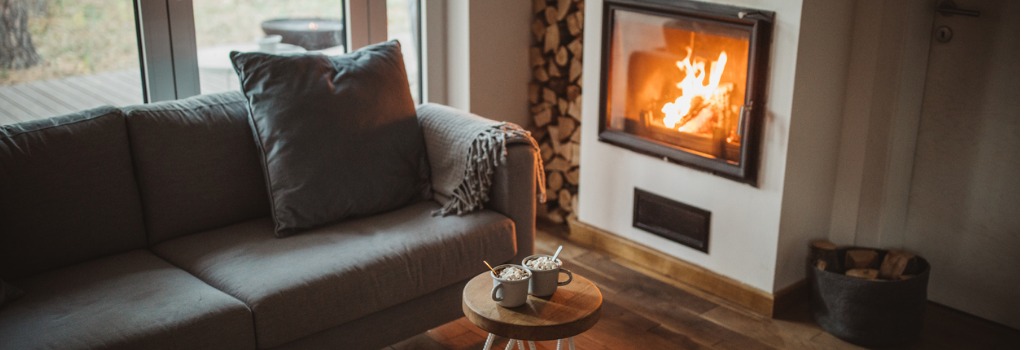There’s nothing worse in the dead of winter than pumping hot air into your home only for it to still feel chilly inside. It’s uncomfortable at that moment, and it’s even more uncomfortable when you get the utility bill.
From the roof to the foundation, homes have a lot of places where heat loss can occur. Below are a few ways you can identify some common weak spots and prevent heat loss from occurring without spending a lot of money.
Problem: Heat Loss Through Windows
Solution: Hang Thick Curtain
Windows let light in, but they can also let heat out. Even the most energy-efficient windows will cause some sort of heat loss, but double-paned windows (also known as double glazed) are around 24% more energy-efficient than single-paned windows during the winter. For many people, replacing all of their single-pane windows isn’t in the budget. A much more cost-effective option is to hang thick curtains with a thermal lining.
Curtains help stop the heat before it gets to the windows. An added benefit is that during the day the curtains can be opened so that sunlight and heat can come in from the outside.
Another solution to minimize heat loss through single-pane windows is adding an insulating glaze film. It’s kind of like adding a second pane of glass for a lot less money.
Problem: Heat Loss Going Up the Chimney
Solution: Close the Fireplace Damper
It’s ironic that the fireplace could be a source of major heat loss. A fire makes it feel cozy, but the chimney is essentially a large opening to the outside. Modern-day fireplaces are designed with a flue up the center of the chimney. At the end of the flue at the top of the firebox, there’s a metal flap called the damper. Any time you’re using the fireplace, the damper needs to be open to let the smoke up the flue.
One of the easiest ways to prevent major heat loss is to make sure the damper is closed. Many people forget to close the damper after the fire goes out only to realize it’s open a day or two later when they wonder why it’s so cold around the hearth. When the damper is open it’s kind of like leaving a window open. If you find that you keep leaving the damper open set an alarm on your phone or leave something near the fireplace to remind you to close it.
Have a home that was built before 1950? Then your chimney may not have a flue. If that’s the case, you can get a chimney balloon to block heated air from escaping. Just don’t forget to remove it before starting a fire.
Problem: Hidden Air Leaks
Solution: Seal Beyond the Exterior Doors and Windows
Most people have heard about weatherizing, which is the process of sealing air leaks around the doors and windows. But what you may not know is there are less obvious air leaks letting the heat out.
Other spots you’ll want to seal around include:
- The baseboards on exterior walls
- Outlets and switch plates on exterior walls
- Plumbing and wiring that’s coming out of the wall
- The fireplace
Caulk can be added around baseboards, plumbing, and wiring. If the gap is a sizeable foam sealant may be the best solution. To stop heat loss around outlets and switch plates, add foam gaskets behind the plates. Furnace cement caulk should be used around fireplaces because it is fire-resistant.
Problem: Heat Seeping Through the Floors
Solution: Throw Down Some Rugs
The National Energy Foundation has found that 10% of heat loss is from the floors. It’s especially bad in homes with a pier and beam foundation and wood floors. All those thin spaces between each board are a potential air leak, and in the cold months wood shrinks increasing the likelihood there will be gaps.
You could opt for carpet, but if that’s not your flooring of choice rugs are the next best thing. Thick rugs will prevent air from seeping through the cracks, and they feel nice underfoot.
Another option is to install flooring insulation, but it won’t make the floors feel warmer. The insulation goes in between the floor joists to help regulate the temperature. It blocks chilly drafts, and that cold air actually keeps the insulation cool. It will feel warmer inside, however, you may still want to throw down a few rugs.
With Verde Energy, you can keep the cold at bay without worrying about how your energy use is warming the planet. Our green energy plans are 100% powered by renewable resources. You can crank up the heat this winter while helping lower emissions. See if green energy plans are available in your area!



